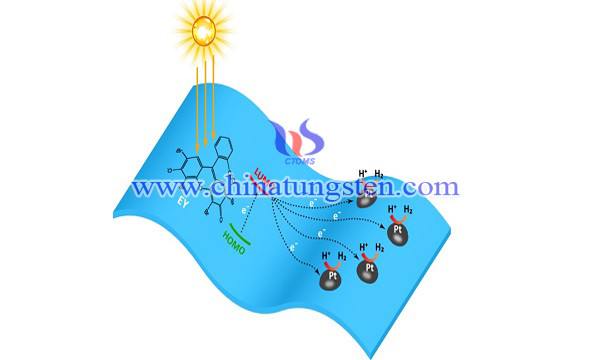Bismuth Tungstate Photocatalyst
- Details
- Category: Tungsten Information
- Published on Saturday, 17 February 2018 22:49
Bismuth tungstate is a kind of tungstate with white powder in appearance and chemical formula Bi2WO6. It is a kind of visible light semiconductor photocatalyst with high attention.

Bismuth tungstate in the light of the sun under the action of bismuth tungstate electronic transitions due to light excitation and produce a corresponding hole, and the formation of electron hole pairs, and the electron hole in the redox role is extremely obvious, can effectively carry out the reaction between organic and polymer. To achieve the effect of degradation. The main synthetic methods of bismuth tungstate are hydrothermal (solvothermal), hydrothermal calcination, ultrasonic assisted method, microwave assisted method, electrochemical method, sol-gel roasting method and so on. Different preparation directions and conditions may be used to remove bismuth tungstate with different crystalline forms.
The crystal forms of bismuth tungstate are mainly: hollow nanospheres, nanoflow microspheres, nanobelt, nanosheets and nanoparticles. Among them, the nano-flower microspheres photocatalytic performance of the most prominent.
Bismuth tungstate as a new photocatalyst has the following characteristics: (1) good UV and visible light response; (2) easy to modify; (3) the photocatalytic effect is stable; (4) the cost is relatively low; (5) environment friendly.
Bismuth tungstate has a wide range of wastewater treatment. Bismuth tungstate photocatalyst can degrade dyes, wastewater, industrial wastewater, saccharin wastewater and pharmaceutical wastewater.
In addition, bismuth tungstate can also enhance and improve the photocatalytic properties through the composite titanium, silver, graphene and other elements, however, its most important advantage is that it is an environment-friendly green technology, it will not cause second pollution to the environment, and make people live in harmony nature.
- Tungsten Oxide Manufacturer & Supplier, Chinatungsten Online: www.tungsten-oxide.com
- Tungsten News & Prices of China Tungsten Industry Association: www.ctia.com.cn
- Molybdenum News & Price: news.molybdenum.com.cn
- Tel.: 86 592 5129696; Fax: 86 592 5129797; Email: sales@chinatungsten.com



 sales@chinatungsten.com
sales@chinatungsten.com